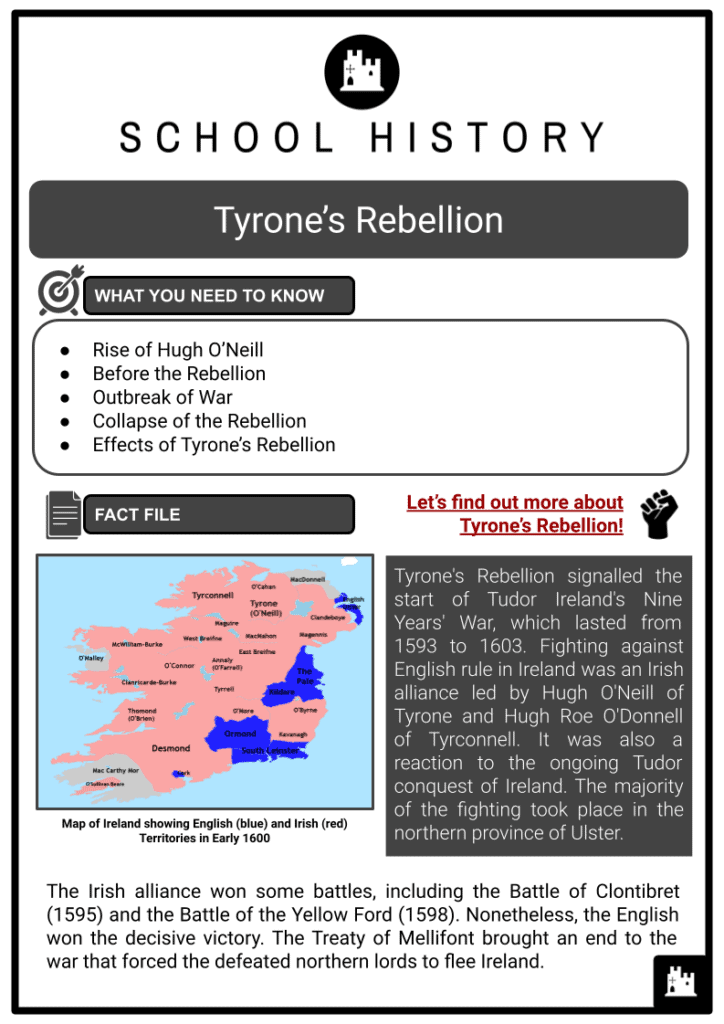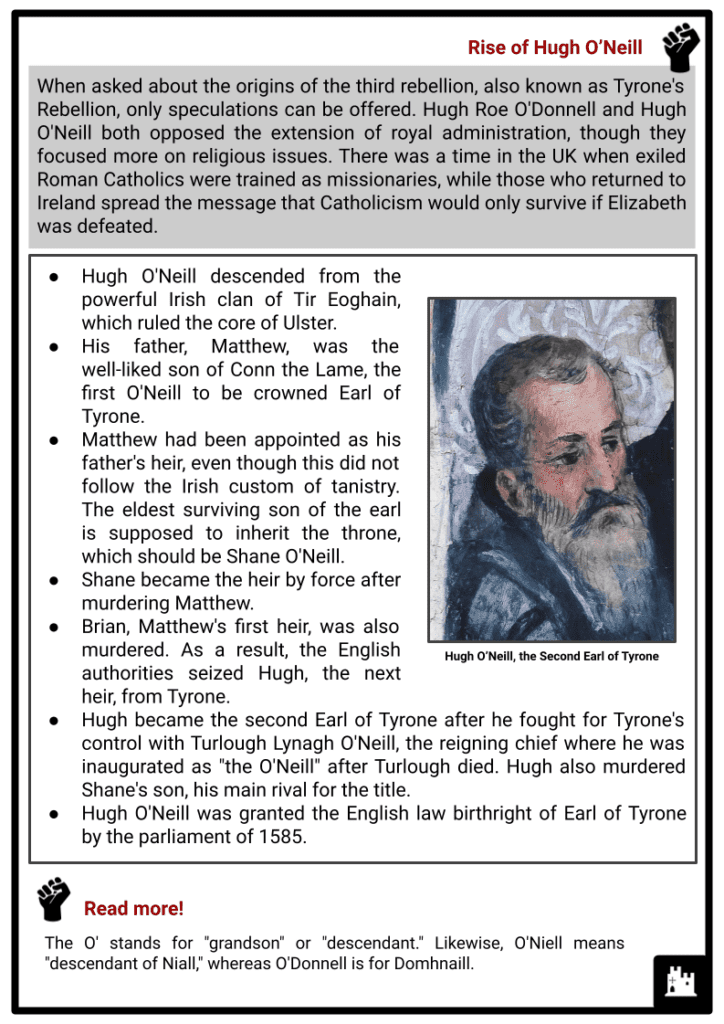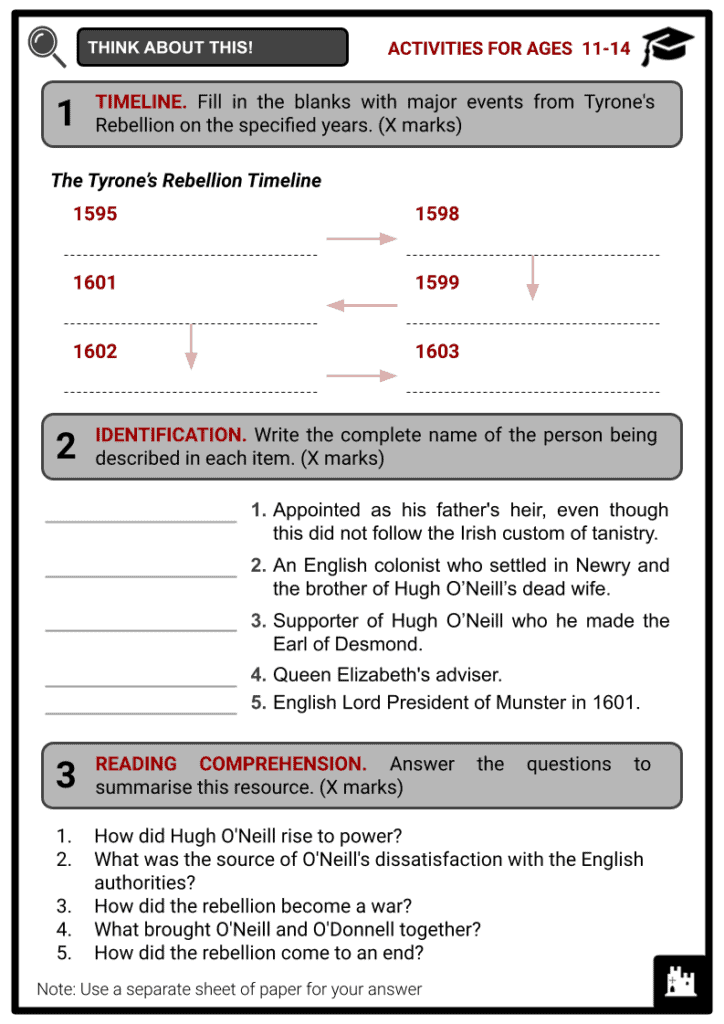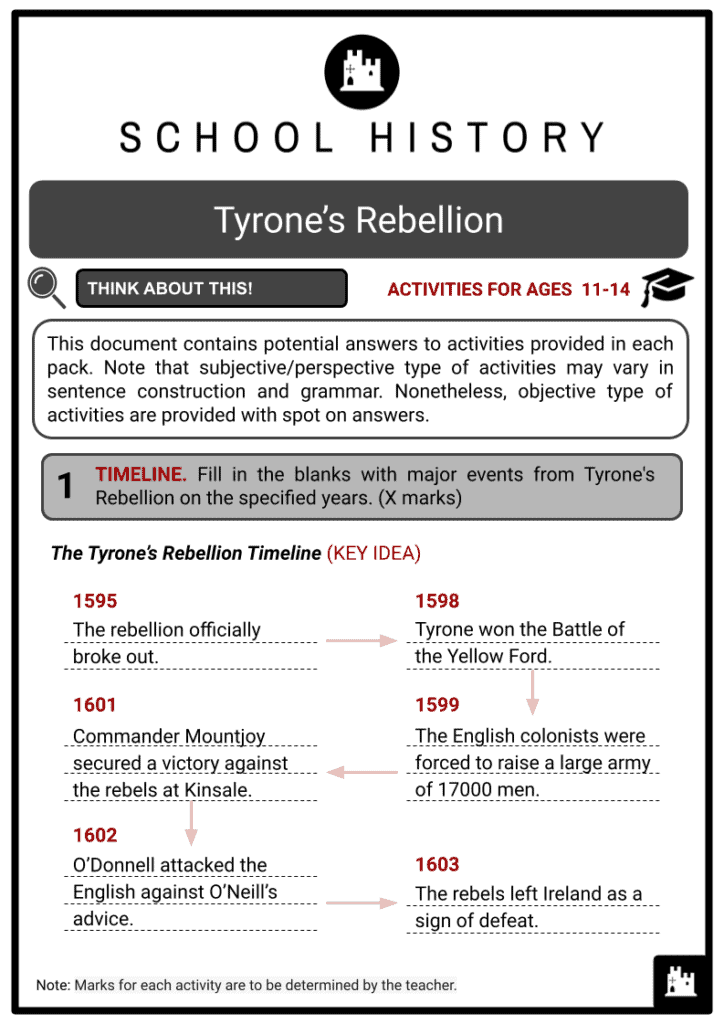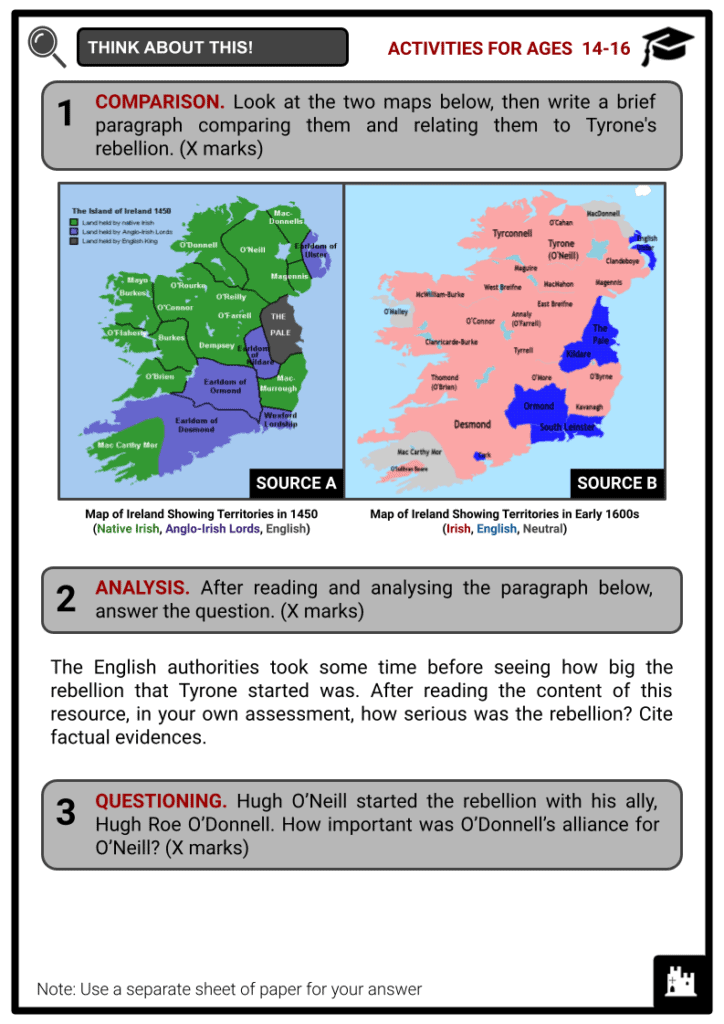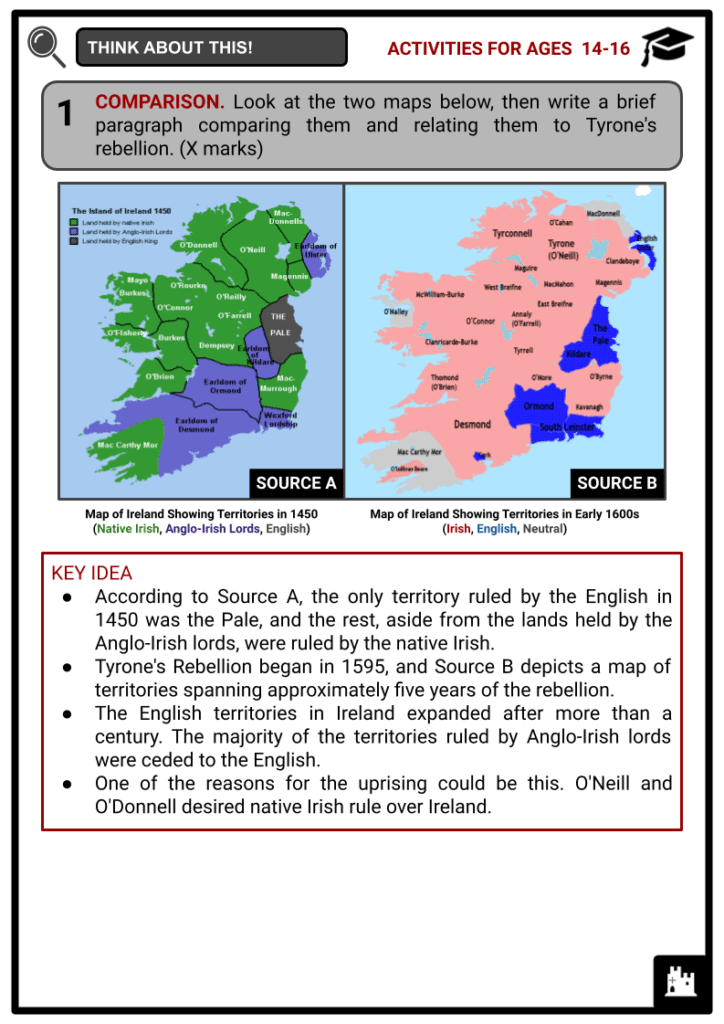Tyrone's Rebellion Worksheets
Do you want to save dozens of hours in time? Get your evenings and weekends back? Be able to teach about Tyrone's Rebellion to your students?
Our worksheet bundle includes a fact file and printable worksheets and student activities. Perfect for both the classroom and homeschooling!
Summary
- Rise of Hugh O’Neill
- Before the Rebellion
- Outbreak of War
- Collapse of the Rebellion
- Effects of Tyrone’s Rebellion
Key Facts And Information
Let’s find out more about Tyrone's Rebellion!
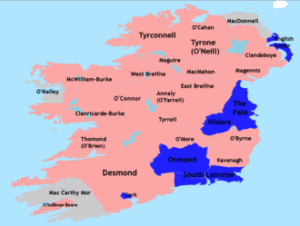
Tyrone's Rebellion signalled the start of Tudor Ireland's Nine Years' War, which lasted from 1593 to 1603. Fighting against English rule in Ireland was an Irish alliance led by Hugh O'Neill of Tyrone and Hugh Roe O'Donnell of Tyrconnell. It was also a reaction to the ongoing Tudor conquest of Ireland. The majority of the fighting took place in the northern province of Ulster.
The Irish alliance won some battles, including the Battle of Clontibret (1595) and the Battle of the Yellow Ford (1598). Nonetheless, the English won the decisive victory. The Treaty of Mellifont brought an end to the war that forced the defeated northern lords to flee Ireland.
Rise of Hugh O’Neill
- When asked about the origins of the third rebellion, also known as Tyrone's Rebellion, only speculations can be offered. Hugh Roe O'Donnell and Hugh O'Neill both opposed the extension of royal administration, though they focused more on religious issues. There was a time in the UK when exiled Roman Catholics were trained as missionaries, while those who returned to Ireland spread the message that Catholicism would only survive if Elizabeth was defeated.
- Hugh O'Neill descended from the powerful Irish clan of Tir Eoghain, which ruled the core of Ulster.
- His father, Matthew, was the well-liked son of Conn the Lame, the first O'Neill to be crowned Earl of Tyrone.
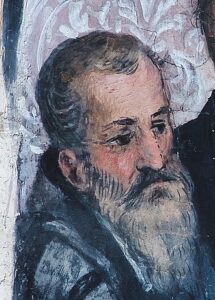
Hugh O’Neill, the Second Earl of Tyrone - Matthew had been appointed as his father's heir, even though this did not follow the Irish custom of tanistry. The eldest surviving son of the earl is supposed to inherit the throne, which should be Shane O'Neill.
- Shane became the heir by force after murdering Matthew.
- Brian, Matthew's first heir, was also murdered. As a result, the English authorities seized Hugh, the next heir, from Tyrone.
- Hugh became the second Earl of Tyrone after he fought for Tyrone's control with Turlough Lynagh O'Neill, the reigning chief where he was inaugurated as "the O'Neill" after Turlough died. Hugh also murdered Shane's son, his main rival for the title.
- Hugh O'Neill was granted the English law birthright of Earl of Tyrone by the parliament of 1585.
- The O' stands for "grandson" or "descendant." Likewise, O'Niell means "descendant of Niall," whereas O'Donnell is for Domhnaill.
Before the Rebellion
- Lord Deputy Fitzwilliam had focused much of his attention at the start of the 1590s on the north of Ireland, which he was tasked with bringing under crown control. Henry Bagenal, an English colonist who settled in Newry, ran for the provincial presidency. He appeared to impose crown authority through sheriffs appointed by the Dublin government. Hugh O'Neill fled and married Bagenal's sister, Mabel, against Bagenal's wishes. Mabel died a few years after the marriage, reportedly in despair over O'Neill's mistresses.
- There were problems with Fitzwilliam's policies, and he was accused of corruption. He used it in various territories and attempted to use it in the O'Neill and O'Donnell territories, but their ruler refused.
- The natural defences made it difficult for the English forces to confront O'Neill. Its geography demonstrates that there were only two possible entry points in Ulster for troops coming from the south. One is in Newry, while the other is in Sligo, and they are in the east and west, respectively.
- The clan of O'Connor ruled Sligo Castle, which was threatened by the O'Donnells. The route from Newry, on the other hand, had easily defended passes.
- The English had established a small colony in Ulster, near Carrickfergus, in the 1570s. The said English colony, however, would be at a disadvantage against O'Neill due to its terrain, which formed an effective barrier on the eastern edge of O'Neill territory.
- The English strategic situation was complicated further by Scottish clans supplying soldiers and materials to O'Neill. The English had to keep an eye on their territorial influence along the Route as well.
- O'Donnell drove Captain Willis out of Tyrconnell in 1592. A year later, troops from Tyrone led by Cormac MacBaron resisted Willis' appointment as sheriff of Maguire's Fermanagh. Willis was then kicked out of Fermanagh.
- As a result, crown forces gathered under Sir Henry Bagenal's command to crush Maguire and his allies. Bagenal launched the attack on September 22, 1593, and was joined four days later by O'Neill. Bagenal and O'Neill won the Battle of Belleek on October 10 after defeating Maguire's blocking forces.
Outbreak of War
- The main reason O'Neill aided the English was his desire to be crowned Lord President of Ulster. But Elizabeth I was concerned that O'Neill was planning to overpower her. Instead, she nominated Henry Bagenal for the position. O'Neill was offended, and in February 1595, he joined his allies in an open rebellion. In 1595, O'Neill and O'Donnell offered to be vassals to King Philip II of Spain. When Tyrone was about to explain his actions to the Queen in London, three Spanish diplomats from Philip II arrived, effectively ending any chance of peace and paving the way for the war.
- Irish Alliance Won the Battle of the Yellow Ford
- The English authorities initially paid little attention to the rebellion. After a failed negotiation in 1595, English armies broke into Ulster and were driven back by force by a trained army.
- On their way to Armagh in 1598, around 2000 English troops were killed at the Yellow Ford. Sir Henry Bagenal, the army's commander, was killed during the early engagements. The English army was on the verge of defeat at this point.
- The victory of O'Neill's army sparked uprisings throughout the country. The English authorities realised the scope of the rebellion and launched a full-fledged war.
- O'Neill made his supporters chieftains and earls, such as James Fitzhomas Fitzgerald as Earl of Desmond and Florence MacCarthy as MacCarthy Mor.
- A rebellion of approximately 9000 men erupted in Munster. Rebels attacked English settlers attempting to colonise the province, and the colonists, including Edmund Spenser, fled for their lives.
- Only a few native lords remained loyal and sided with the English colonial government, but it included all of the country's fortified cities and towns. There were also only a few native lords who supported the rebels because loyalties were complicated by clan splits.
- Hugh O'Neill worked tirelessly to bolster his forces and persuade the people of the Pale to join his rebellion, citing their Catholicism and alienation from the Dublin government.
- Command of the Earl of Essex
- In 1599, the second Earl of Essex, Robert Devereux, arrived in Ireland with 17000 English troops.
- Before attempting to deal with Ulster, he reduced his troops significantly when striving to settle the south of the country as advised by the Irish privy.
- His expeditions were disorganised and disastrous, most notably the one that was mauled by O'Donnell at the Battle of Curlew Pass while crossing the Curlew mountains to Sligo.
- When Robert was about to turn to Ulster, Essex agreed to a truce with O'Neill and was heavily chastised by his London opponents.
- He began a venture for London without the Queen's permission, anticipating that he would be asked to withdraw, and he was executed after attempting to overthrow the English government.
- Lord Mountjoy succeeded him, and the commands in Munster and Ulster were given to two Irish war veterans, George Carew and Arthur Chichester, respectively.
- In November 1599, O'Neill sent Queen Elizabeth a twenty-two paragraph document outlining his terms for a peace treaty. One of the terms is for Irish natives to govern their country, with a strong emphasis on freedom of movement and a Roman Catholic identity.
- O'Neill acknowledged that English authority was superior to Irish authority, but he requested that the viceroy be an earl of the privy council of England. Sir Robert Cecil, Queen Elizabeth's adviser, agreed with O'Neill's terms.
- End of the Rebellion in Munster
- In 1601 the English Lord President of Munster, George Carew, was able to legally reject the rebellion in Munster. He employed both conciliation and force.
- He was able to reclaim the majority of Munster's principal castles after successfully negotiating a pact with Florence MacCarthy, the province's main Gaelic Irish leader.
- The English forces captured James Fitzhomas in June 1601. Florence MacCarthy, on the other hand, was arrested when Carew summoned him for negotiations.
- Both MacCarthy and Fitzhomas were imprisoned in the Tower of London, but the latter died there. The mercenaries of O'Neill were then expelled from Munster.
Collapse of the Rebellion
- Mountjoy was able to penetrate Ulster through seaborne landings at Derry. Henry Dowcra and Arthur Chichester, with the assistance of Hugh Roe's rival Niall Garve O'Donnell, devastated the countryside in an attempt to cause famine and kill random civilians.
- Their military assumption was that without crops, people, or cattle, the insurgents would be unable to feed themselves or recruit new fighters. This attrition began to bite quickly, and it also meant that the Ulster chiefs were confined to Ulster to defend their respective territories.
- Although O'Neill was able to repel Mountjoy's next land offensive at the Battle of Moyry Pass near Newry in 1600, his status was becoming helpless.
- The long-awaited Spanish ally arrived in 1601. It had 3500 soldiers in Kinsale, Cork. Mountjoy immediately confronted them with 7000 men.
- O'Neill and O'Donnell, along with their allies, marched south to corner Mountjoy, whose men had not fully recovered from the battle with the Spaniards. O'Neill attacked the lands that did not support him during the march.
- The English force was not destroyed by famine and sickness. The Battle of Kinsale favoured the English.
- O'Donnell decided to attack the English in January 1602, against O'Neill's advice. Even the Irish chiefs were taken aback by the attack, which resulted in the defeat of the Irish forces.
- The Irish forces retreated to the north of Ulster to regroup. However, they lost more men due to freezing and flooding. George Carew captured the last rebel base of operations in the south during the war of Dunboy.
- O'Donnell left Ireland for Spain where he pleaded for another Spanish landing. He died in 1602 when an English agent poisoned him while the O'Donnell clan was succeeded by his brother.
Effects of Tyrone’s Rebellion
- The leaders of the uprising that launched the war, O'Neill and O'Donnell, as well as the other Ulster chiefs, were awarded full pardons and the return of their lands to assure the conclusion of the war that nearly bankrupted England. According to some scholars, they abandoned their Irish properties and pledged loyalty to the English Crown.
- Mountjoy declared an amnesty for all rebels in the country in 1604. This prudence was due to the English being unable to afford to fight more wars at the time, as the war in Ireland had brought the English exchequer dangerously close to bankruptcy by 1603.
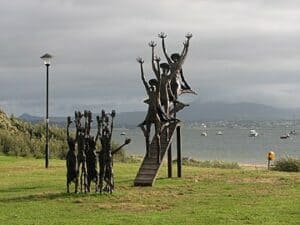
A Bronze Sculpture in Rathmullan, County Donegal Representing the “Flight” - Though the monarch gave the Irish rebels favourable conditions, English authorities never trusted O'Neill and his allies, who did not trust the English either.
- The so-called "Flight of the Earls" occurred in 1607, when the leaders of the uprising fled Ireland after the government discovered they were plotting another rebellion.
- They could have continued the battle from an expedition in Spain if they had been successful in obtaining military backers, but they were not.
- Spain signed the Treaty of London with the nascent Stuart monarchy in August 1604.
- Sir Cahir O'Doherty, a previous English ally during Tyrone's uprising, raised a rebellion in 1608, attacking and burning Derry before being subdued and executed.
- The territories of the absent earls were taken in 1608 for attempting to ignite a new war, and they were quickly colonised in the Plantation of Ulster.
- As a result of the Tyrone’s rebellion, the Nine Years' War was therefore a crucial stage in the English and Scottish occupation of Ulster.
Image Sources
- https://upload.wikimedia.org/wikipedia/commons/thumb/0/0a/Nine_Years_War_January1600.png/330px-Nine_Years_War_January1600.png
- https://upload.wikimedia.org/wikipedia/commons/thumb/2/2e/Hugh_O%27Neill%2C_1608.jpg/330px-Hugh_O%27Neill%2C_1608.jpg
- https://upload.wikimedia.org/wikipedia/commons/thumb/1/15/Flight_of_the_Earls_-_geograph.org.uk_-_821328.jpg/360px-Flight_of_the_Earls_-_geograph.org.uk_-_821328.jpg

